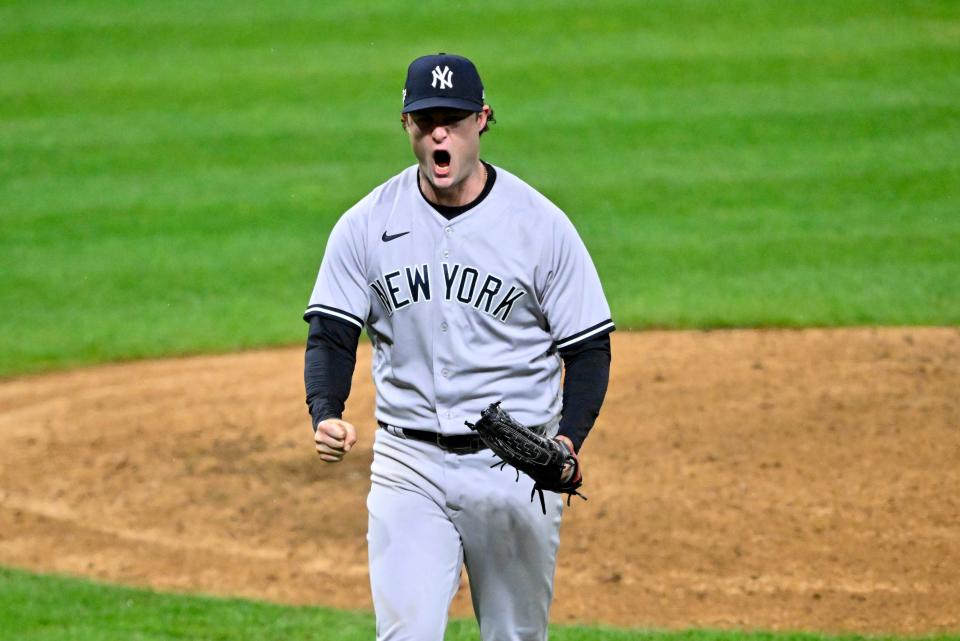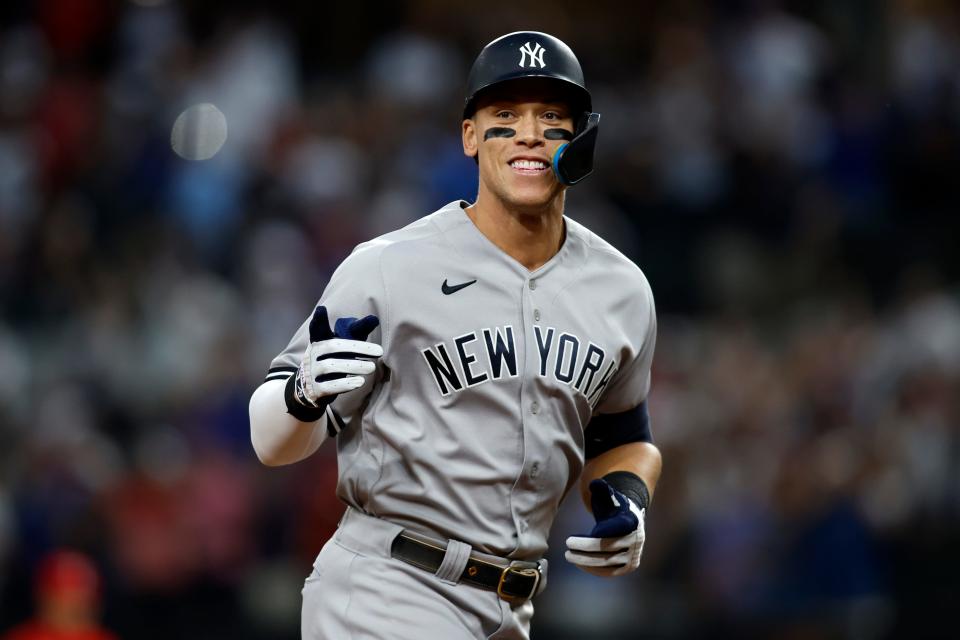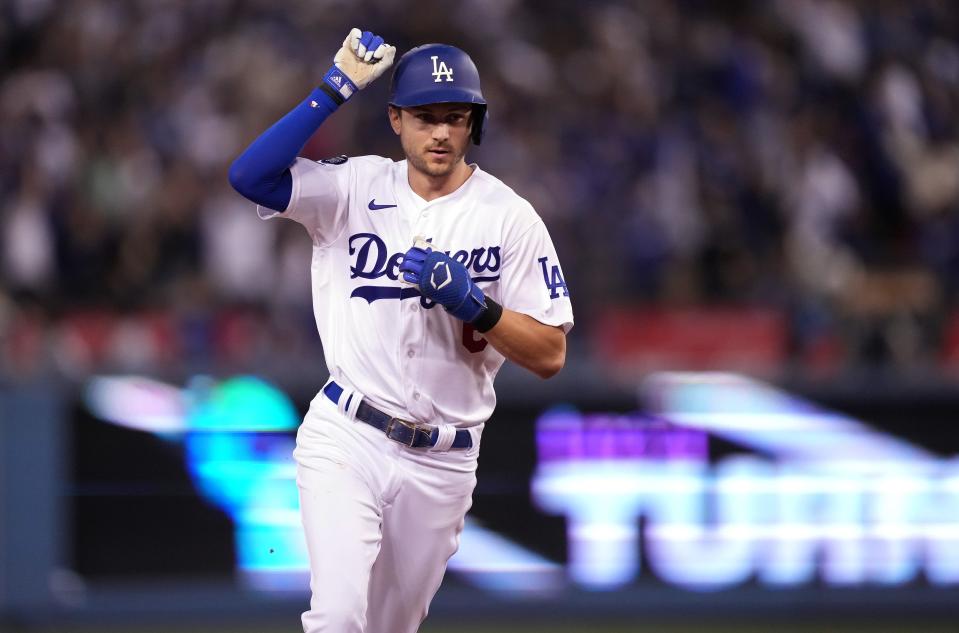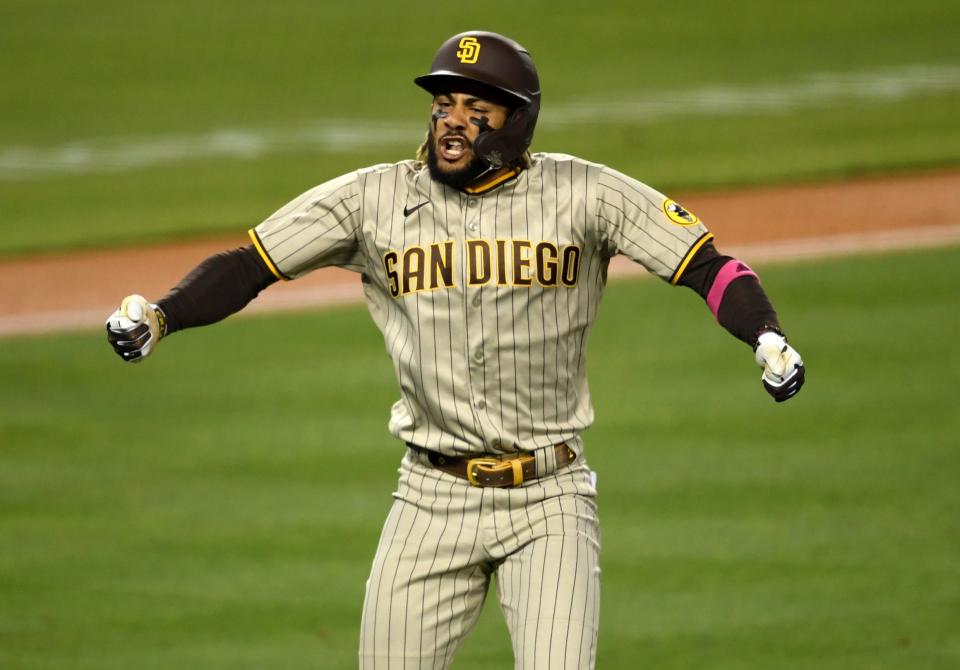The 40-year-old shortstop: How MLB's new math drives lengthy megadeals for $300 million men
What will you be doing in 2033?
If you’re a teenager reading this, you’ll be nearing your 30th birthday. A fiftysomething, and the treadmill to retirement may speed up or slow down. And all of us could be just 17 years from a potential doomsday climate scenario.
Yet while uncertainty prevails for mere mortals, Trea Turner and Xander Bogaerts know almost exactly what they’ll be doing: Playing Major League Baseball, preferably for their current teams.
In this winter of wild spending from aggressive franchises, the game is suddenly dotted with decadelong commitments to elite players, bucking a trend that chilled the free agent market late last decade. As front offices hewed doggedly to “win curves” and irrational fears they might not extract optimal value from a veteran player in a contract’s later years, free agency stagnated. Elite players in their prime like Manny Machado and Bryce Harper and their agents had to create markets for themselves, like door-to-door window salesmen.
Yet now, with labor peace assured, a handful of aggressive owners in place and industry revenues hitting a record $11 billion, front offices are finally adopting an ethos more associated with a manager in the dugout: Worry about tomorrow, tomorrow.
SPORTS NEWSLETTER: Sign up now for daily content sent to your inbox
That concept is further fueled when spreading large guarantees over longer terms is friendlier for the ever-nettlesome luxury tax thresholds, which are based on the average annual value of a contract. It is how Turner ($300 million) and Bogaerts ($280 million), who will be 30-year-old shortstops in 2023, received 11-year commitments from the Phillies and Padres, respectively, even as both clubs already employed $300 million men in Harper and Machado. And how Aaron Judge, who turns 31 in April, is guaranteed $40 million a year – a record for a position player – until he’s 39.
So, what happens then?
It’s a question aggressive teams won’t worry about until that time comes. It’s almost inevitable some teams will have to eat salaries of declining and ultimately released players, as the Los Angeles Angels did – to the tune of about $25 million – when they dumped Albert Pujols in May 2021.
Others in this long game, however, have already realized that their signings were bargains.
A look at the 10 veteran players guaranteed at least 10 years or $300 million in salary since 2019 – and the final years clubs may have to pay them:
Class of 2028: Manny Machado (35), Gerrit Cole (37)

Contracts: Machado 10 years, $300 million with Padres; Cole nine years, $324 million with Yankees.
Opt-outs?: Yes. Machado is widely expected to opt out after 2023 unless the Padres want to preemptively tack on a few more years at a higher per annum – or tear it up altogether. Cole can opt out after 2024, but the Yankees can keep him by guaranteeing a 10th season at $36 million in 2029.
How it’s looking: Here’s how quickly these contracts age: Machado’s $300 million haul was briefly a record for a free agent and raised concerns about paying a player $30 million when he’s 35. Less than four years later, Judge received a $40 million guarantee for his age 39 season. Given that Machado has produced MVP-caliber years in three of his four seasons with the Padres, it’s looking like a bargain.
Seeing the future: Both players have been healthy and were All-Star selections the past two seasons. Cole remains a 30-start horse, even if odds are stacked against him fulfilling a nine-year contract without significant injury. Machado looks like he’ll still be close to his prime when his original deal is up – although opting out should extend the commitment further.
Class of 2030: Mike Trout (38)

Contract: 12 years, $426.5 million with Angels, including a 10-year, $360 million extension signed in 2019.
Opt-out?: No.
How it’s looking: OK. One of the top 10 players of all time is suddenly trailing Judge in AAV. On the other side of the equation, a calf injury that limited Trout to 36 games in 2021 and a back injury that sidelined him for 30 games in 2022 raises the question of how Trout's 6-2, 235-pound frame will age. He remains a capable center fielder and produced a .999 OPS last year.
Seeing the future: Trout’s tenure in Anaheim began seven years before Shohei Ohtani’s arrival, and he’s locked into seven more seasons after Ohtani presumably departs following 2023. No man is an island, but Trout might be the exception for an Angels franchise that hasn't reached the playoffs since 2014.
Class of 2031: Aaron Judge (39), Francisco Lindor (37), Bryce Harper (38), Corey Seager (37)

Contracts: Judge nine years, $360 million with Yankees; Lindor 10 years, $341 million with Mets; Harper 13 years, $330 million with Phillies; Seager 10 years, $325 million with Rangers.
Opt-outs?: None.
How it’s looking: Behold the first billion-dollar free agent class of baseball geriatrics. While all these deals certainly seem like “lifetime contracts,” you wonder how much longer this group might play beyond their current terms. For now, all is peachy. Harper’s $25.4 million per year is certainly prudent, given the MVP-caliber production and World Series appearance that followed. Lindor was much better his second year in New York, while Seager’s acquisition has been accompanied by a huge build-up in Texas, led by Jacob deGrom’s signing. Judge is just getting started on Chapter 2 in pinstripes.
Seeing the future: The age-old question finally arises: How long can a player stay on shortstop? At 6-4, 215, Seager might be the first to move, while Lindor could be primed for a Robin Yount-like shift to the outfield someday, where he’d probably be an above-average fielder. Harper’s contract is so long that he will both precede and outlast sluggers Nick Castellanos and Kyle Schwarber, after which he might slide to DH full time.
Class of 2033: Trea Turner (40), Xander Bogaerts (40)

Contracts: Turner 11 years, $300 million with Phillies; Bogaerts 11 years, $280 million with Padres
Opt-outs: None
How it’s looking: That Phillies-Padres NLCS we just witnessed might soon resemble an annual engagement, at least for the near future. Turner completes an everyday lineup that has evolved into a monster since owner John Middleton’s spending spree began with Harper. Bogaerts, already among the most consistently productive shortstops in the game, pairs with Machado to give San Diego two cornerstones on the left side of the infield. Watch out.
Seeing the future: What happens when the consensus fastest player in baseball signs a contract to play a premium position into his 40s? Turner is a true five-tool player, but his sprint speed of 30.3 feet per second – ranking second among MLB regulars – is his differentiator. Trea vs. Father Time will be a fascinating battle to track for the next decade.
Class of 2034: Fernando Tatis Jr. (35)

Contract: 14 years, $340 million with Padres
Opt-outs: None
How it’s looking: This contract’s 14-year term once looked outrageous but now seems reasonable given that Tatis will be just 35 when it expires. While he was third in MVP voting in 2021, Tatis missed all of 2022 after a broken wrist suffered in a motorcycle accident and then a PED suspension. He also underwent shoulder surgery and will miss the first 20 games of 2023 finishing his suspension.
Seeing the future: What a whirlwind: From near-MVP to injured to suspended and losing his job, as Bogaerts will bump Tatis to the outfield. It’s a lot from which to come back, but Tatis’ youth – he turns 24 next month – and skills (career 160 adjusted OPS) indicate he should return to elite offensive production.
And, just like everyone else on this list, Tatis certainly has the luxury of time.
This article originally appeared on USA TODAY: Trea Turner, Xander Bogaerts proof MLB's new math driving megadeals

